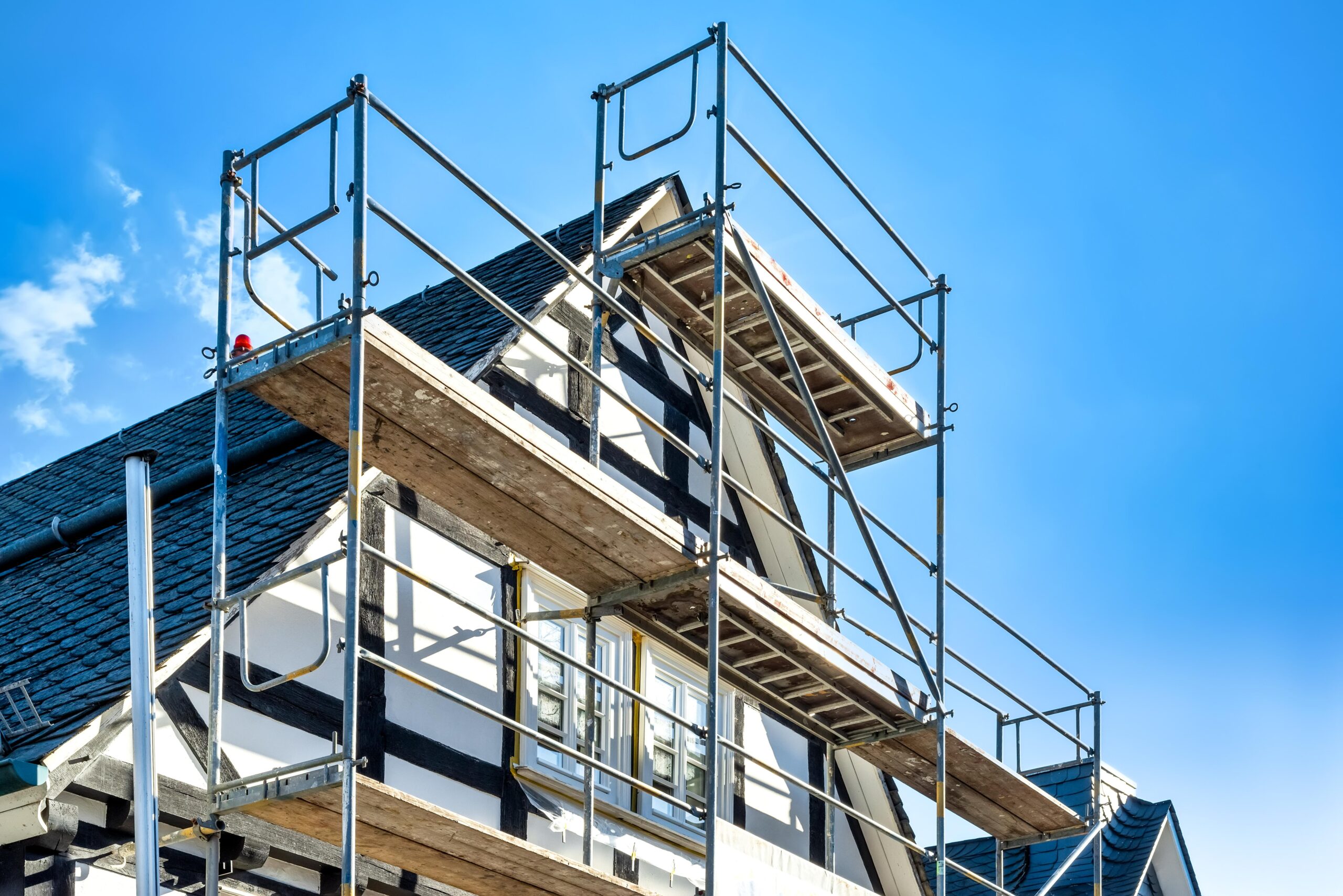A Step-by-Step Guide To Erecting and Dismantling Scaffolds
There are many reasons your business may require scaffold hire services. Whether you have construction or renovations planned, or have ventured into unexpected maintenance and repairs, having a professional company erect and dismantle scaffold for you can save time and substantially increase your safety precautions. Overall, it can also be a lot of work.
Let’s take a closer look at the process and break it down in this step-by-step guide to putting up and taking down scaffolding.
Understanding the Task

Knowing how to erect scaffolding can be a challenge. It’s a complex task with many potential dangers, requiring a high degree of expertise and experience. Ensuring the safety of your workers and the general public comes before everything else.
A professional will make the job look effortless, but it’s a massive undertaking. Generally, the following steps are taken when erecting scaffolding.
Step #1. Site Preparation and Planning
The first step is evaluating the ground conditions to ensure they’re suitable for scaffolding. While it’s possible (and safe, when done correctly) to use scaffold on uneven ground, you want to avoid placing them where they’ll sink in too deep. Because of this a firm inspection of the earth is vital. It’s also crucial to obtain the necessary permits.
Step #2. Base Preparation
Once you’ve established a safe and legal foundation, it’s time to prep the base for the scaffold. You’ll lay out base plates, ensuring they’re level and stable while situating them at a safe distance from hazards. You’ll also need to determine if the base is large enough to accommodate the scaffold.
Step #3. Scaffolding Erection
You must assemble the scaffold components correctly, starting with the base and working upwards. It’s important to make every piece secure by fastening all connections tightly. Some professionals have other workers follow behind the initial installers to double check if the scaffold is secure to reduce the risk of danger.
Step #4. Installing the Platform
Once you’ve assembled, checked, and re-checked the scaffolding frame, you can move on to installing the platform. This step is one of the most challenging as it’s imperative to ensure its level and fastened securely to the frame. At this point, you’ll install guardrails and toeboards to prevent falls and to create an overall safer work environment.
Step #5. Inspection and Testing
Before using the scaffold, inspect it and perform any necessary testing. Determine every piece is tightly fastened, stable, and level. Once you’ve deemed it safe for use, your team can begin working at height on your scaffold. If you need more clarification throughout the process, please consult a professional!
Scaffold Dismantling

When you finish with your scaffold, it’s equally important to dismantle it with the safety precautions you followed when setting them up.
Step #1. Remove Guardrails and Platform
The first step is removing the guardrails and platform. Essentially, you need to work backwards. Always ensure the area below the scaffolding is clear and there are zero hazards present that could cause injury.
Step #2. Take Down the Frame
Take care to dismantle your scaffold frame in the reverse order of assembly. Carefully remove each component one at a time, and lower them to the ground slowly.
Step #3. Dismantle the Base
Once the frame is entirely down, you can remove the base components, including the base plates and any other supports you used during the installation process.
Step #4. Site Clean Up
When the scaffolding is removed, make it a point to clean up the site. All scaffold components should be picked up and packed away, and the ground should be in the same condition of when you started.
Safety Is Your First Priority

When working with scaffolding, safety is your priority. Take every precaution possible during the build and tear down, and ensure your team has access to the following gear.
- Hard Hats: Offer essential protection from injury caused by falling objects or accidental head bumps on hard scaffold components.
- Safety Harnesses: If your workers are working up high, they need a safety harness, regardless of how experienced they may be. Every harness must attach to a secure anchor point to prevent falls at all cost.
- Non-Slip Footwear: Everyone on your worksite should wear non-slip footwear with adequate traction to prevent slips, trips, and falls. Working on scaffolding, and extending many stories up, makes non-slip footwear a non-negotiable aspect. Footwear with traction and safety harnesses drastically reduces the chance of severe injury.
- Gloves, Safety Glasses, Hi-Vis Clothing: Protecting hands from cuts and other injuries when handling scaffolding components is vital, and safety glasses will help protect eyes from dust, debris, and other particles. High-visibility clothing is another essential apparel addition, especially when working near traffic or crowded locations.
- Tools and Equipment: Everyone on site intending to erect scaffolding should have access to the right tools for a sturdy, safe installation. You’ll need levels, a scaffolding spanner, pliers, hammers, and more!
Working with a Professional
Choosing a professional scaffold hire in Wollongong like Skelscaff will ensure your scaffolding goes up and comes down safely and professionally. We take your job site safety seriously, and your team’s safety is at the top of our list.
If your next project has scaffolding requirements, contact us today to ask how we can help!


